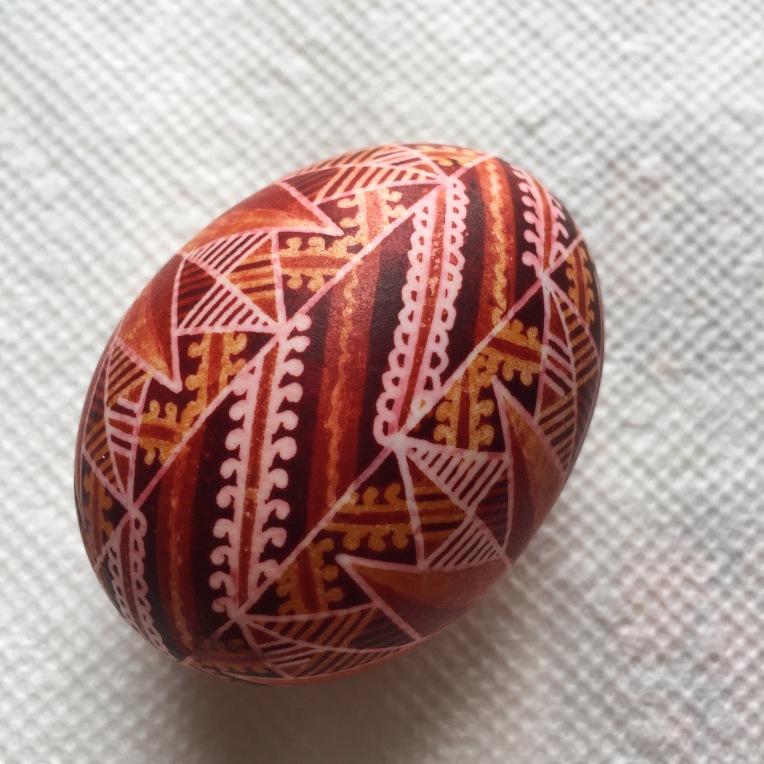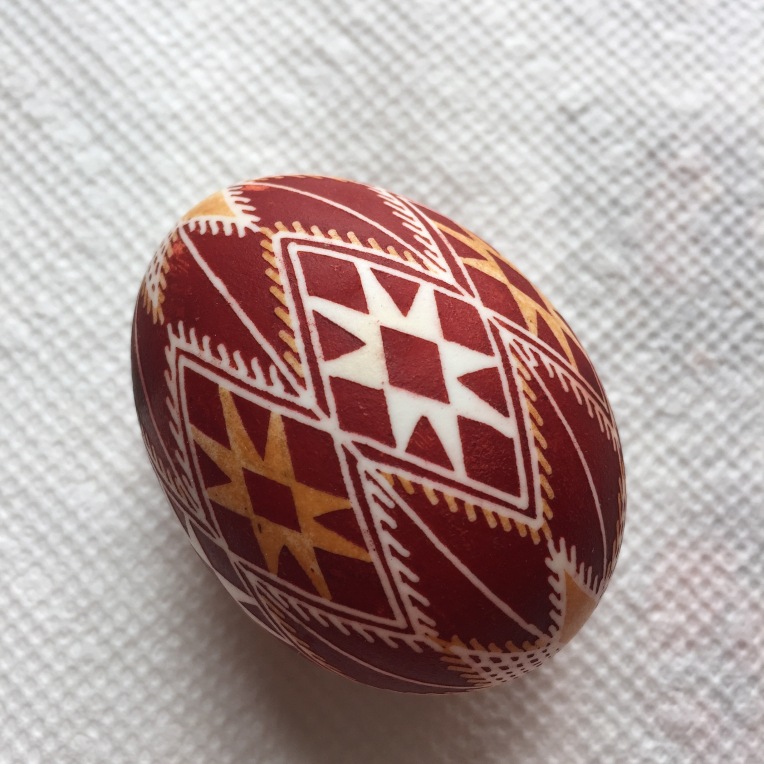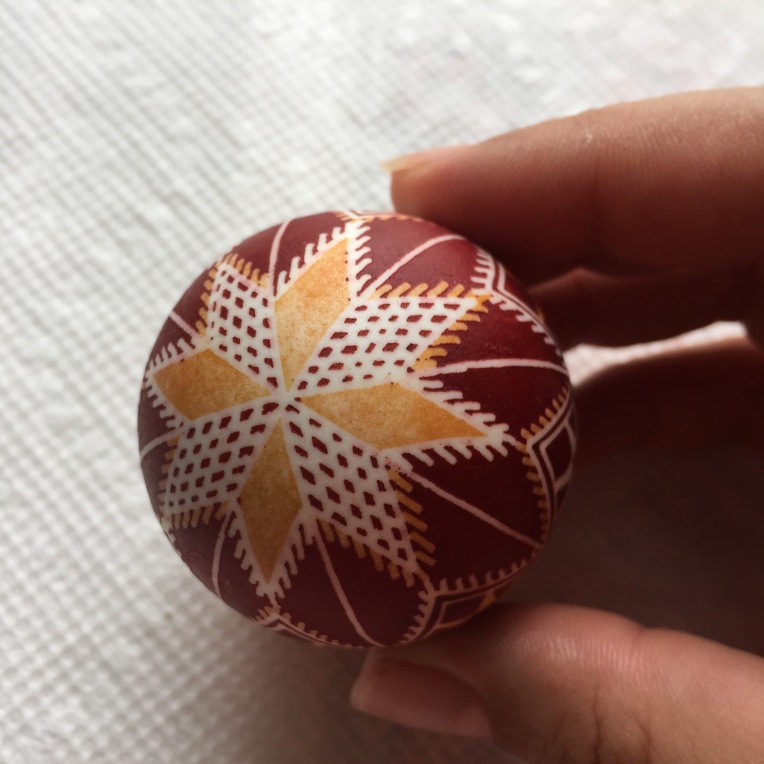
I love these kinds of patterns from the North-East of Ukrainian ethnic territories, this area is now in Russia, and this is where one of my great-grandfathers was killed during World War II. These are so earthy and so sky-ey at the same time. I sometimes think, if birds were to make pysanky (the decorated eggs), this of what they would look like. Maybe it’s the abundance of pine-branch motif, that look so much like feathers. They also remind me the patters of native Americans.
The dyes: yellow is probably buckthorn (though maybe still weld? When you make and throw out 3 yellow dyes in 10 days, things become a bit confusing). The red is sappan wood. Then things became somewhat complicated. I was going for dark brown and put it into walnut, but it actually managed to eat out the darker red and gave me quite light brick-brown. 
I didn’t mind the color, but for this egg preferred it to be traditional rather than experimental, so the egg waited for about a week till I made logwood. This time, as also previously, logwood on other eggs was coming off with wax, so I made an experiment. After logwood was dark enough, I let the egg dry, and next day put it back into sappan wood hoping the the coat of another dye will keep the logwood from pealing off (that seemed to have worked OK with the dark purple egg in the previous post). Voila! Seems to have worked just fine. Now let’s hope the logwood dye doesn’t spoil before I want to use it again – I have to make new yellow, and possibly also new red, and I used up all of the logwood extract I had left from my first purchase of natural dyes few years ago.
Here’s another take, where you can see the side-band also.










